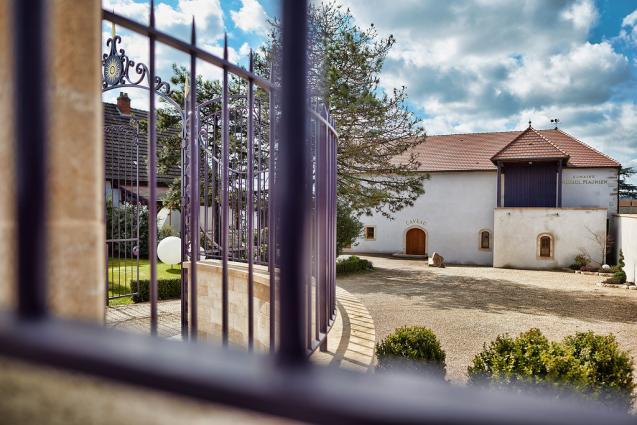Michel Magnien Clos Saint Denis
Michel Magnien Clos Saint Denis
First mentioned as far back as 1120, fourteenth century Morey was a place of asylum for Cistercian monks who appeared to have possessed numerous vineyards and even a winery by 1306. The appellation extends from Chambolle-Musigny to Gevrey-Chambertin and covers around 148 hectares, 80% of which are planted with grapes for red wines.
It was cited for the first time in 1367, but its origins are said to date back to the 11th century. This clos belonged to the canons of the Saint Denis de Vergy Chapter. It is said that the monks have been cultivating vines there since 1203. The vineyards are adjacent to Clos de la Roche and planted on a clay-limestone soil with a mixture of iron oxide.
Tasting Notes
Complex and harmonious on the nose, where cherry and strawberry notes intermingle with plum and roasted aromas. After a strong entry, the wine is rich, well balanced, and has lovely weight on the palate. The finish is delicate and smooth.
Food Pairing
This Grand Cru is close to perfection and should be enjoyed with fine game such as a roast or haunch of venison in a sauce of époisse cheese.
First mentioned as far back as 1120, fourteenth century Morey was a place of asylum for Cistercian monks who appeared to have possessed numerous vineyards and even a winery by 1306. The appellation extends from Chambolle-Musigny to Gevrey-Chambertin and covers around 148 hectares, 80% of which are planted with grapes for red wines.
It was cited for the first time in 1367, but its origins are said to date back to the 11th century. This clos belonged to the canons of the Saint Denis de Vergy Chapter. It is said that the monks have been cultivating vines there since 1203. The vineyards are adjacent to Clos de la Roche and planted on a clay-limestone soil with a mixture of iron oxide.
Tasting Notes
Complex and harmonious on the nose, where cherry and strawberry notes intermingle with plum and roasted aromas. After a strong entry, the wine is rich, well balanced, and has lovely weight on the palate. The finish is delicate and smooth.
Food Pairing
This Grand Cru is close to perfection and should be enjoyed with fine game such as a roast or haunch of venison in a sauce of époisse cheese.





















